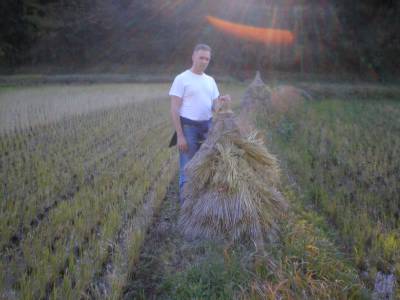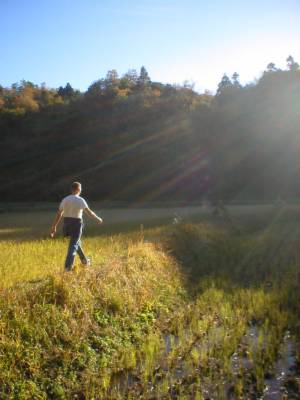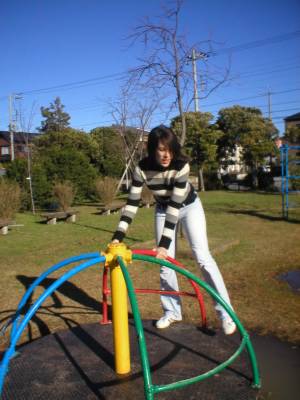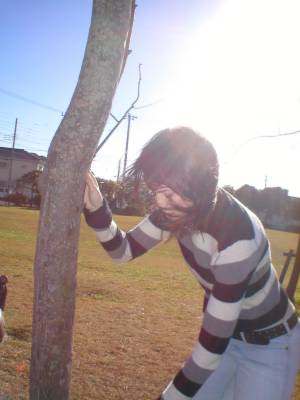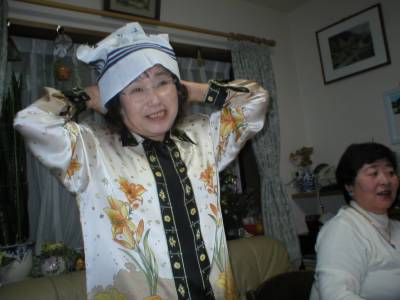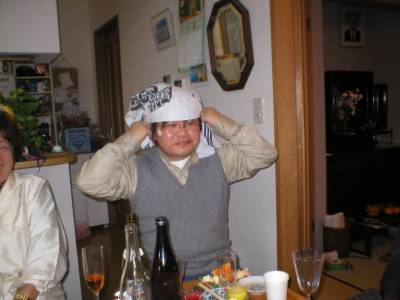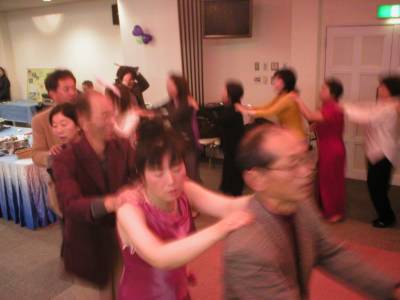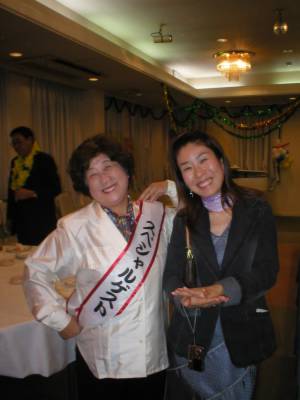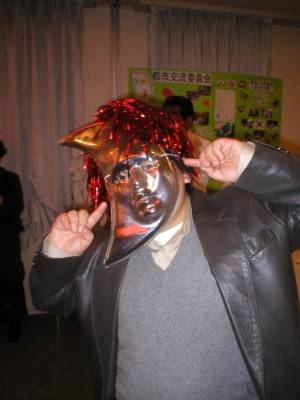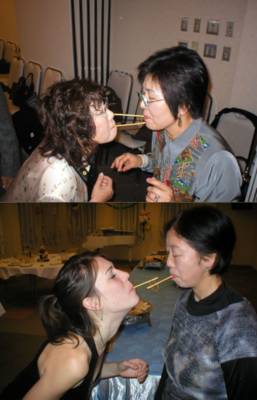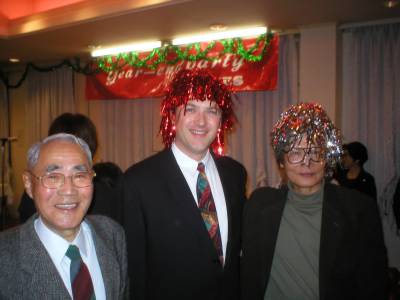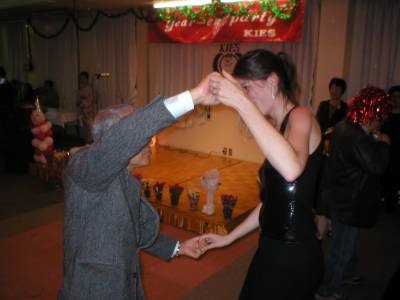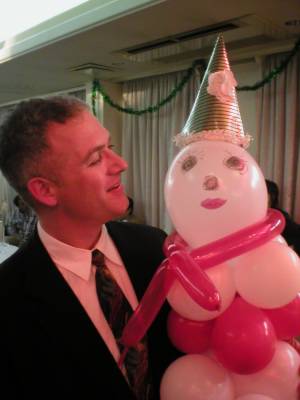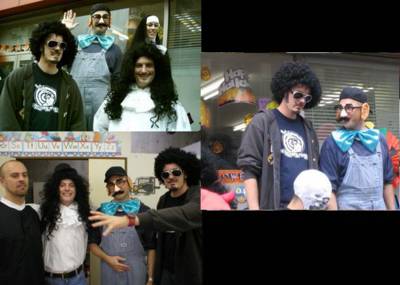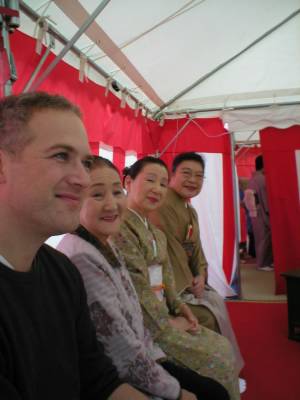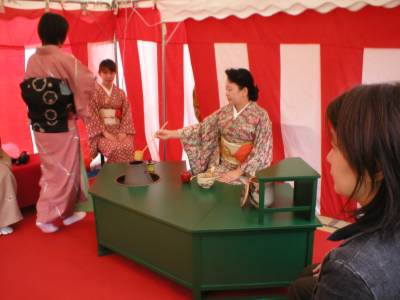Stream of Conshusness
I can see my train of thought. It's moving through my head...
Thursday, December 09, 2004

Excuse my nonverbal French, but at some point cross-cultural education has to talk about things like public lavatorization....This, my dear friends, is what many a public women's "restroom" (as it were) looks like all across Japan. That's right ladies...you be squattin, my sistahs. I avoid using these at all costs. In the event it is absolutely unavoidable, I must undertake a lengthy process of denuding myself completely from the waist down and carefully positioning myself according to precise scientific calculations. But, I can complete the whole process in less than two hours now, so that's something...

Scott (right), Umeyo-san and ??? (I can't remember his name, but he had a very gentle smile and he always got shoved out of the conversation because he was so polite and there were a lot of women there who kept branching off from any given topic. So no sooner would he raise a question or state a comment, than someone was interrupting him to say what that question or comment reminded them of. Poor guy...)
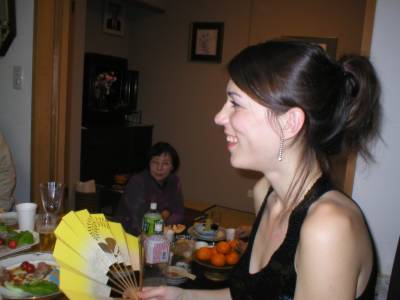
Umeyo-san gave me three old hand-made fans that she used to dance with when she was a girl. They're very delicate and really special. I was so surprised when she gave them to me! It really moved me. Such a gesture is truly characteristic of many Japanese people: a spirit of almost selfless generosity, wanting to offer a gift or hospitality as well as wanting to aid you in better understanding or feeling more comfortable as part of Japanese culture and traditions. It's part of the basic fiber of the Japanese people and it is making my experiences in this culture very precious to me.
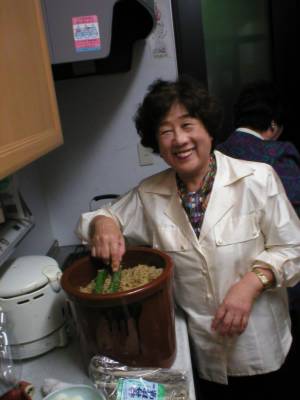
Umeyo-san hosted a few people from the party at her house after the party ended. She served us salmon slices and roe served on crackers as well as in little, hollowed-out lemon rinds. We ate yakiniku (bbq'd meat slices) and other kinds of fish. And of course much wine and/or beer and/or sake. Here she is in the processing of preparing pickles. Vegetables are buried in a pot filled with a bacterial mixture called nuka and left to soak. Every day the mixture is stirred and after so many days, the vegetables are 'dug up' and are ready to serve as pickles. They are very delicious.
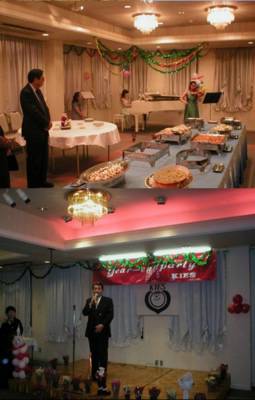
Last Saturday, we went to a Christmas/end-of-the-year party for the members and particpants of a local community center. Jonathan teaches a class there, so we attended. We decided to dress up a bit and were worried we might be overdressed, but it turned out to be a fairly formal affair and we were dressed exactly right. We ate good food and played silly games. Oddly, tho, it was held in an out-of-style church-basement-kinda room with tacky light fixtures and drab walls. It gave the gathering a slightly comical touch. Anyway, at the beginning of the event, we listened to a few solo numbers performed by various instrumentalists and then stood through prepared speeches of three or four different members of some committee or board. This opening was especially notable to me because I hadn't had a thing to eat that whole day, and we had to stand there listening and waiting while the food sat on the tables under our noses. And this was multilingual food. No translation necessary. It was clearly saying to me, "Saarraaaah. Eeeaaat meee. Eat me noooowww..." It was all I could do to drown out its terrifingly beautiful Siren song. Not to put too fine a point on it.... heh heh.... Okay, then. Moving on...
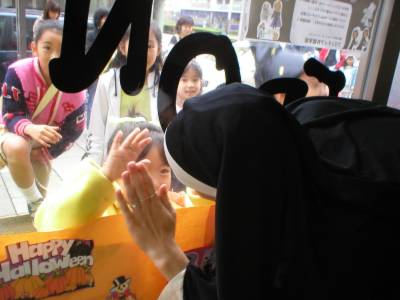 All righty! This next batch are from the halloween party my school held on Oct31. I was decked out in a cheesy nun costume that i felt honestly felt slighty sacrilegious and uncomfortable wearing, but I didn't have any other options....and I liked being called 'sister' for a while. (Remember the White-Haired Girls, Emily? Gosh, it made me nostalgic for those days of running around with turtlenecks suctioned to our heads...)
All righty! This next batch are from the halloween party my school held on Oct31. I was decked out in a cheesy nun costume that i felt honestly felt slighty sacrilegious and uncomfortable wearing, but I didn't have any other options....and I liked being called 'sister' for a while. (Remember the White-Haired Girls, Emily? Gosh, it made me nostalgic for those days of running around with turtlenecks suctioned to our heads...)

Here taiko drummers are playing for the crowd. This art is one of the coolest things in Japan, I think. It's really loud and really powerful and the drummers are always very animated and excited. It's exhilarating to watch even people with mediocre skill. This group included some kids who were learning. They were totally into it.

The parade finally marched it's way around town and ended here among the main hubbub of the festival. Many people were dressed in the costumes of different styles and professions of "ancient days". The bottom of these four photos is of a samurai (I think) but I don't know who or from what time period the others represent.

In this tent, they were holding a tea ceremony. I was nervous to do it because there is a very strict set of rules to go by when drinking the tea. Their is a certain way of accepting it from the tea hostess, a certain way of folding and holding your napkin, a certain way of twisting the bowl in your hand and then a certain way of drinking from the bowl and a certain number of times you sip from it to drain it clean, a certain way of wiping the part of the bowl your lips touched when you are finished and a certain way of returning the bowl to your hostess. It's quite beautiful, actually. We sat next to three older women in kimonos who gently explained what to do at each step. The tea is made with macha, which is a very bitter kind of green tea powder, and it makes the appearance and texture of the tea creamy and foamy. I think it tastes pretty good, though.
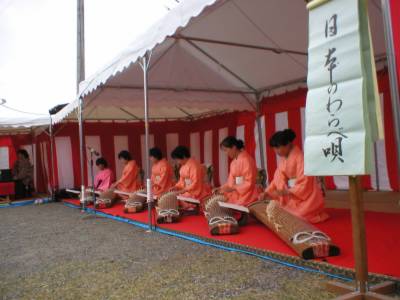
This instrument is called the koto. It's a traditional Japanese instrument that is usually (always?) played by women. I couldn't see it clearly, but the music on their stands had really unique notation. Notes are played by plucking strings on either side of the bridges, and the bridges slide up and down to create different pitches as well.





